 White Horseman ♥ The Alchemist
White Horseman ♥ The Alchemist

And I saw when the Lamb opened one of the seals, and I heard, as it were the noise of thunder, one of the four beasts saying, Come and see. And I saw, and behold a white horse: and he that sat on him had a bow; and a crown was given unto him: and he went forth conquering, and to conquer.
-Revelations 6:1-2 (King James Version)
The White Horseman is a traveling alchemist who has discovered the ability to turn oil into energy. This is her philosopher's stone, the equivalent of turning lead into gold. She is solely focused on her work. The land behind her has been completely stripped from surface mining of oil sands. Toxic pools of water used in the refining process are poorly maintained and contaminate fresh water sources and prevent the reclamation of the area. Waterfowl and songbirds are common casualties of the toxic slurry. Recovered specimens hang on her cart for future experimentation. Her manmade steed doubles as a drilling mechanism, the horsehead functions as a pumpjack - a common sight on oil fields. Oil is fed into the caravan along with fresh water to refine the crude into a usable form. A gas flare burns off flammable gas from a chimney, while smoke and pollutants from the refining process is released into the atmosphere. Conquest promises progress while ignoring the severity of the consequences.
Example Species
Whooping Crane
Horned Grebe
Green winged teal
Black cottonwood
Quaking aspen
White Spruce
Tamarack Larch
Links
- Tar Sands Process
- Short summary of tar sands - what they are, how they're processed, what impacts they have
- Environmental Assessment of Canadian Boreal Forest
- Report made in 2003 detailing risks and species threatened by tar sands development in the region
- Recent Exxon Mobile Arkansas Pipeline rupture
- News article on the recent Exxon Mobile spill of tar sands oil in Arkansas
- Land of Oil and Water
- Website for documentary dealing with the impact of the tar sands on local boriginal communities
- Bird Monitoring Report in Oil Sands Region(2011)
- Report on impact of oil sands production on species of birds
-Revelations 6:1-2 (King James Version)
- Links
- Tar Sands Process
- Short summary of tar sands - what they are, how they're processed, what impacts they have
- Environmental Assessment of Canadian Boreal Forest
- Report made in 2003 detailing risks and species threatened by tar sands development in the region
- Recent Exxon Mobile Arkansas Pipeline rupture
- News article on the recent Exxon Mobile spill of tar sands oil in Arkansas
- Land of Oil and Water
- Website for documentary dealing with the impact of the tar sands on local boriginal communities
- Bird Monitoring Report in Oil Sands Region(2011)
- Report on impact of oil sands production on species of birds
 Red Horseman ♣ The Knight
Red Horseman ♣ The Knight
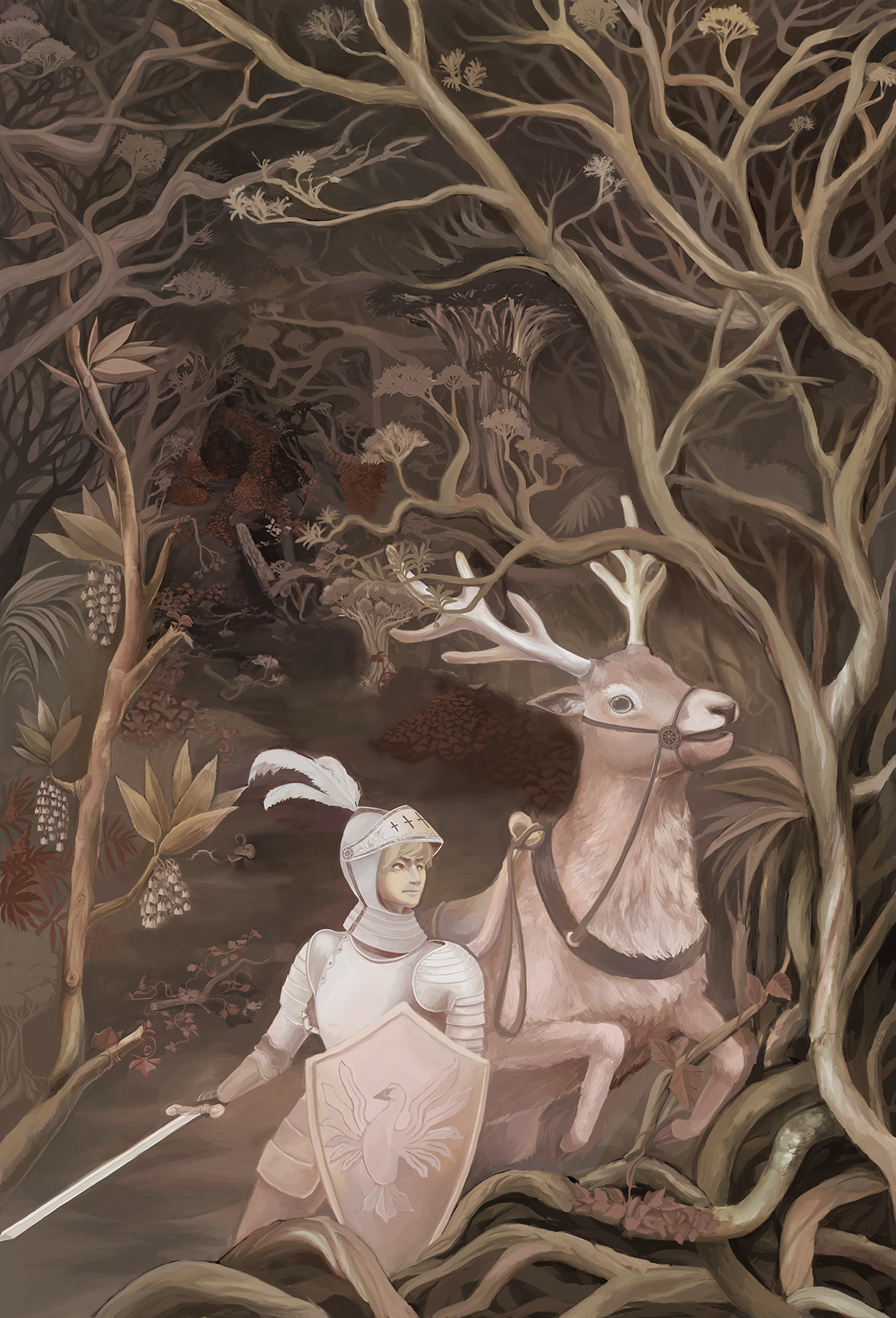
And when he had opened the second seal, I heard the second beast say, Come and see.
And there went out another horse that was red: and power was given to him that sat thereon to take peace from the earth, and that they should kill one another: and there was given unto him a great sword
-Revelations 6:3-4 (King James Version)
The Red Horseman is a crusader fighting his way through a rich and dense forest, carving a path with his sword. With each cut invasive species like kudzu and sumac sprout and cover his path, choking the original forest and creating a thorny, impenetrable barrier. His steed, an invasive red deer, tramples a path beside him. There is no easy return on the path he carves, just as there is none for the ecosystems ravaged by invasive species.
Example Species
Bois Dentelle
Dragon Tree
St. Helena Gumwood
Kudzu
Sumac
Red Deer
Mute Swan
Links
- Invasives
- Short summary of tar sands - what they are, how they're processed, what impacts they have
- Bois Dentelle
- Only two individuals of this species are left. Invasive species have invaded its last remaining habitat on the island of Mauritius.
- St. Helena Gumwood
- The national tree of St. Helena, the introduction of goats in the past 150 years has threatened the species.
- Kudzu
- A highly invasive vine known for its ability to completely take over entire swaths of land.
- Mute Swan
- Mute swans, originally brought from Europe, compete with native species such as the Trumpeter swan for resources
-Revelations 6:3-4 (King James Version)
- Links
- Invasives
- Short summary of tar sands - what they are, how they're processed, what impacts they have
- Bois Dentelle
- Only two individuals of this species are left. Invasive species have invaded its last remaining habitat on the island of Mauritius.
- St. Helena Gumwood
- The national tree of St. Helena, the introduction of goats in the past 150 years has threatened the species.
- Kudzu
- A highly invasive vine known for its ability to completely take over entire swaths of land.
- Mute Swan
- Mute swans, originally brought from Europe, compete with native species such as the Trumpeter swan for resources
 Black Horseman ♦ The Merchant
Black Horseman ♦ The Merchant
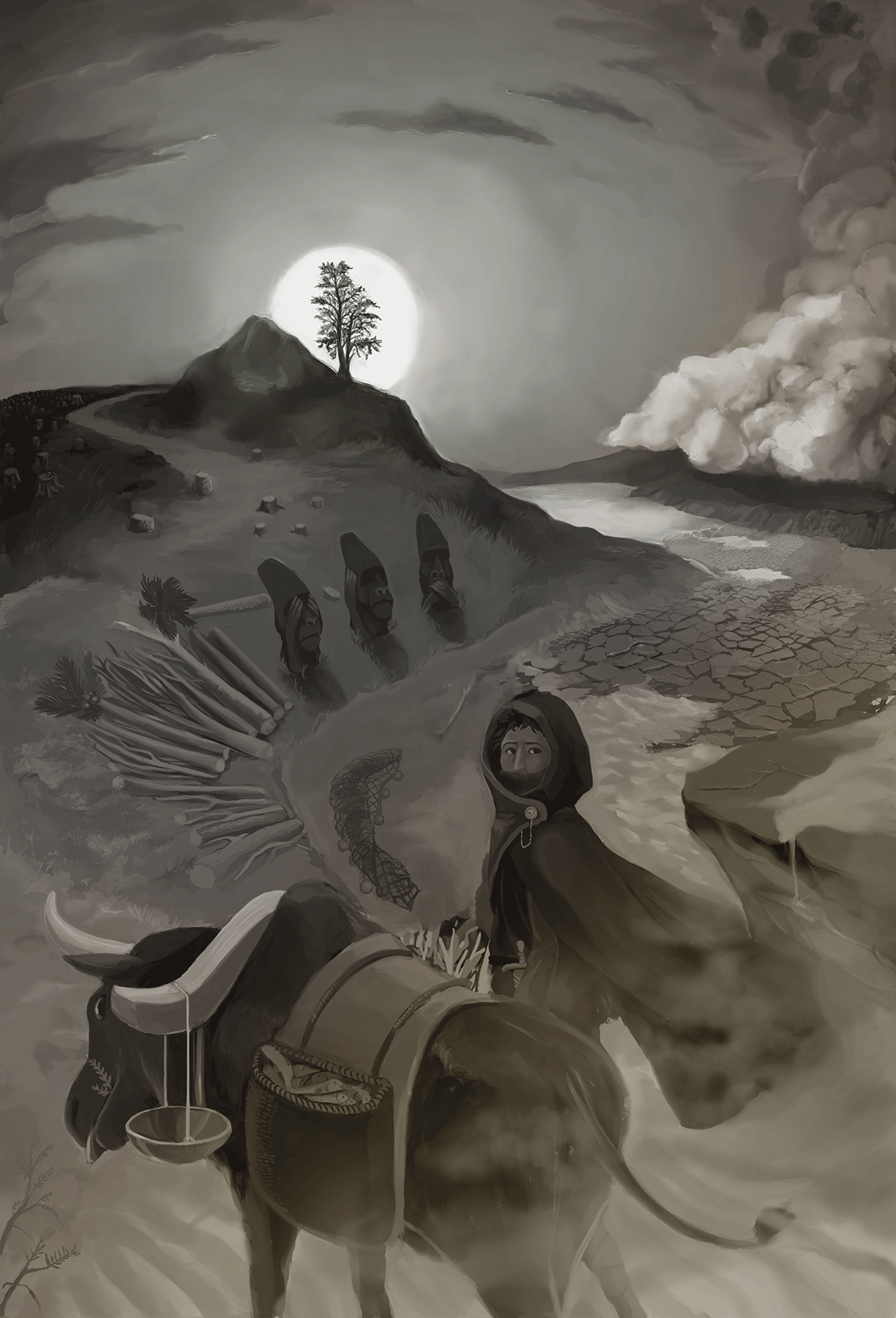
And when he had opened the third seal, I heard the third beast say, Come and see. And I beheld, and lo a black horse; and he that sat on him had a pair of balances in his hand. And I heard a voice in the midst of the four beasts say, A measure of wheat for a penny, and three measures of barley for a penny; and see thou hurt not the oil and the wine.
-Revelations 6:5-6 (King James Version)
Famine is a merchant, his steed carries supplies of fish and wood, though the land he traverses is now oceanless and only one tree remains. Like the biblical Famine, the Black Horseman deals with the unequal exchange of resources. Overharvesting of timber, overfishing, and overgrazing has destroyed the ecosystem. Desertification and drought have gripped the land, as a sandstorm begins to roll in. The Easter Island-esque statues were based off the imagery of gorilla heads from bushkill. The unequal exchange of resources between humans has resulted in the need to hunt bushmeat in order to survive. The heads are posed as the 'Three Wise Monkeys' - hear no evil, see no evil, speak no evil.
Example Species
Gorillas
Toromiro
Paschalococos disperta
Links
- The Rise and Fall of Easter Island's culture
- One theory on the collapse of Easter Island
- Bushmeat Crisis Taskforce
- Organization working to conserve wildlife being threatened by bushmeat trade
- Overfishing
- Website dedicated to information on Overfishing
- Desertification
- A general summary of desertification and its impacts
- Toromiro
- An Easter Island native tree now extinct in the wild, the last was cut down in 1960.
- Paschalococos disperta
- A giant palm once native to Easter Island, its extinction coincided with the arrival of humans
-Revelations 6:5-6 (King James Version)
- Links
- The Rise and Fall of Easter Island's culture
- One theory on the collapse of Easter Island
- Bushmeat Crisis Taskforce
- Organization working to conserve wildlife being threatened by bushmeat trade
- Overfishing
- Website dedicated to information on Overfishing
- Desertification
- A general summary of desertification and its impacts
- Toromiro
- An Easter Island native tree now extinct in the wild, the last was cut down in 1960.
- Paschalococos disperta
- A giant palm once native to Easter Island, its extinction coincided with the arrival of humans
 Pale Horseman ♠ The Witch
Pale Horseman ♠ The Witch
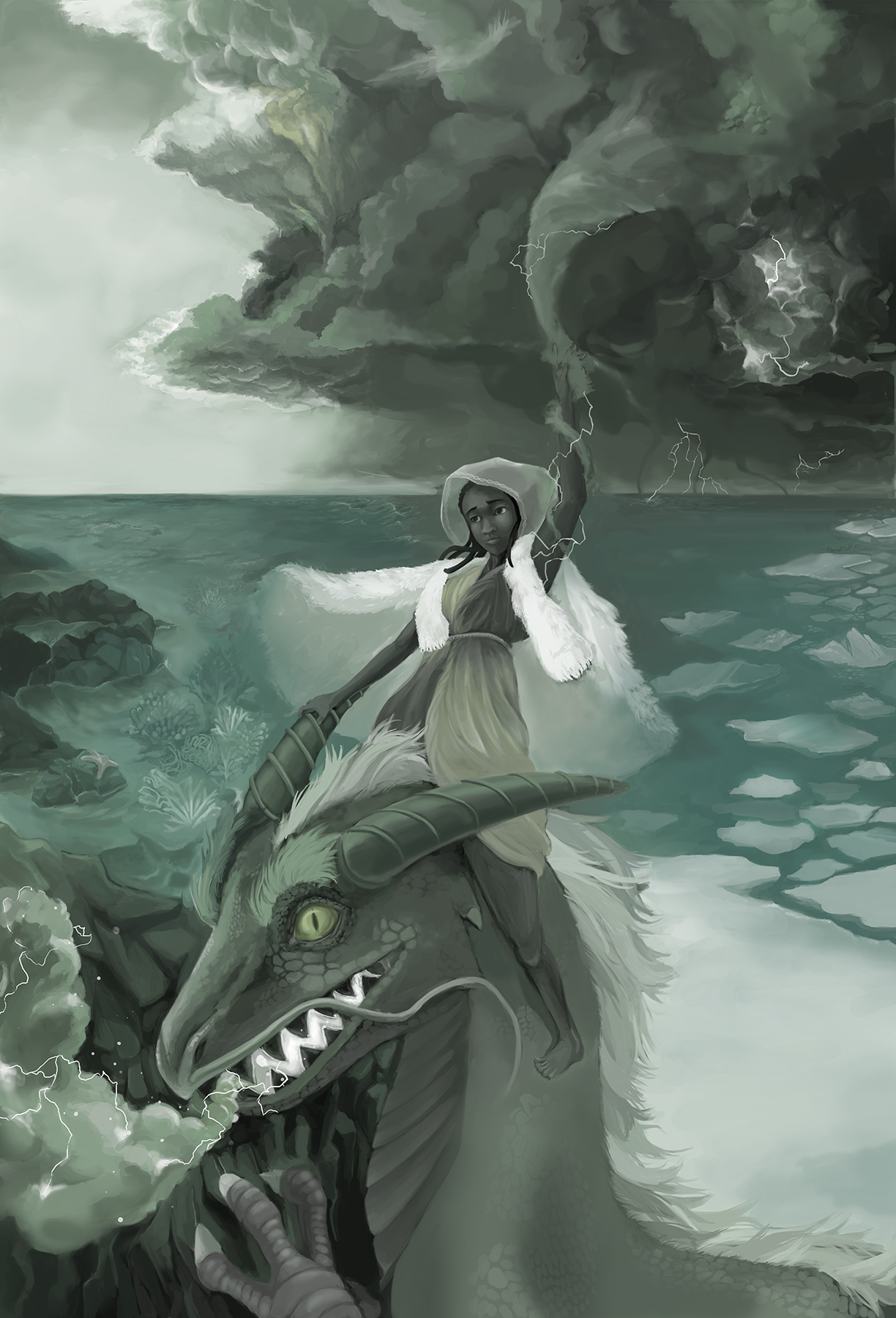
And when he had opened the fourth seal, I heard the voice of the fourth beast say, Come and see.
And I looked, and behold a pale horse: and his name that sat on him was Death, and Hell followed with him. And power was given unto them over the fourth part of the earth, to kill with sword, and with hunger, and with death, and with the beasts of the earth.
-Revelations 6:7-8 (King James Version)
Death is a witch, harbinger of destruction riding on a brimstone breathing dragon. In the medieval ages witches were often the scape goats of environmental disaster. They were blamed for earthquakes, storms, and drought. Likewise the dragon in western mythology is depicted as a monstrosity, while in Eastern culture it is revered and thought to control the weather. The Pale Horseman is the embodiment of balance. These disasters are nature's reaction to our own actions, and attempt to set things right resulting in violent storms and weather patterns. To the left a coral reef experiences coral bleaching from global warming, while to the right ice sheets have begun to melt and break apart. Beyond a certain point of imbalance, nature can begin to destroy itself. Even if there are existing individuals in a species, a lack of genetic diversity is as much of a threat as humanity's direct actions. The removal of certain keystone species can cause an entire ecosystem to decline. Human development has made it so ecosystems become separated into small pockets of wildness which in themselves must find balance or face local extinction.
Example Species
Polar Bears
Staghorn Coral
Brain Coral
Cauliflower Coral
Ochre Starfish
Links
- Coral Bleaching
- Description on Coral Bleaching and its impacts
- Ice sheets
- Information on ice sheets
- Protected Area needs in a changing climate
- Describes the effect of climate change on protected areas and species and how the current system is ineffective for the shifting ranges of target species
- Metapopulation Dynamics
- Indepth description on the dynamics of isolated populations of species
- Keystone Species
- Origin of Robert T Paine's theory of Keystone species and his experiment with Pisaster ochraceus or ochre sea star
-Revelations 6:7-8 (King James Version)
- Links
- Coral Bleaching
- Description on Coral Bleaching and its impacts
- Ice sheets
- Information on ice sheets
- Protected Area needs in a changing climate
- Describes the effect of climate change on protected areas and species and how the current system is ineffective for the shifting ranges of target species
- Metapopulation Dynamics
- Indepth description on the dynamics of isolated populations of species
- Keystone Species
- Origin of Robert T Paine's theory of Keystone species and his experiment with Pisaster ochraceus or ochre sea star
Process
My initial idea was to create a series of miniature ecosystem dioramas with fictional creatures within glass candy jars. These would be accompanied by a catalogue of paintings and illustrations of each of the ecosystems.
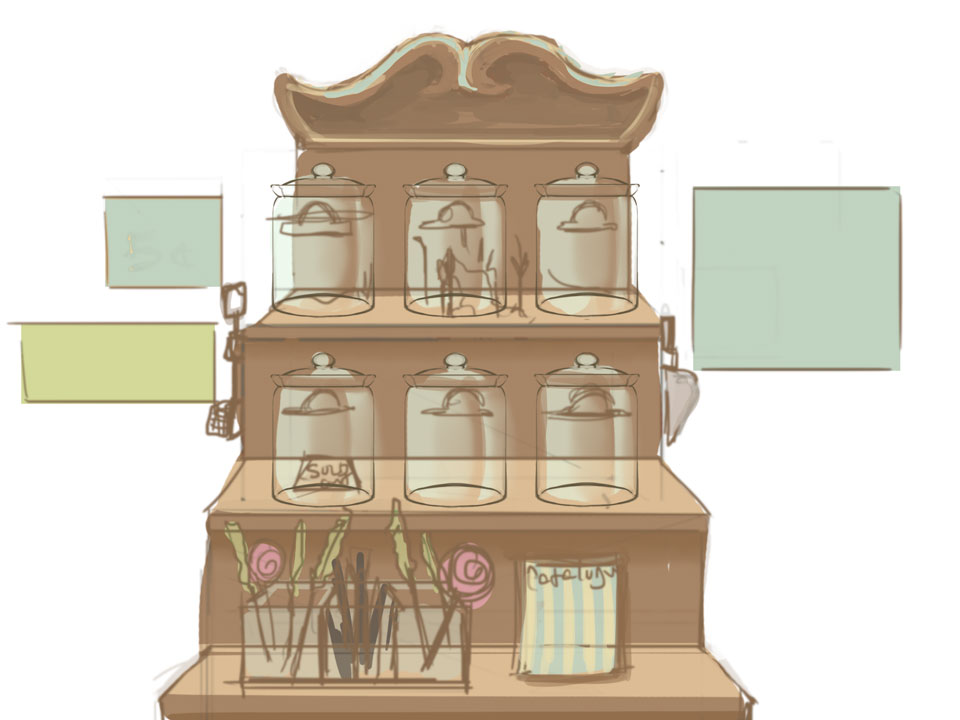
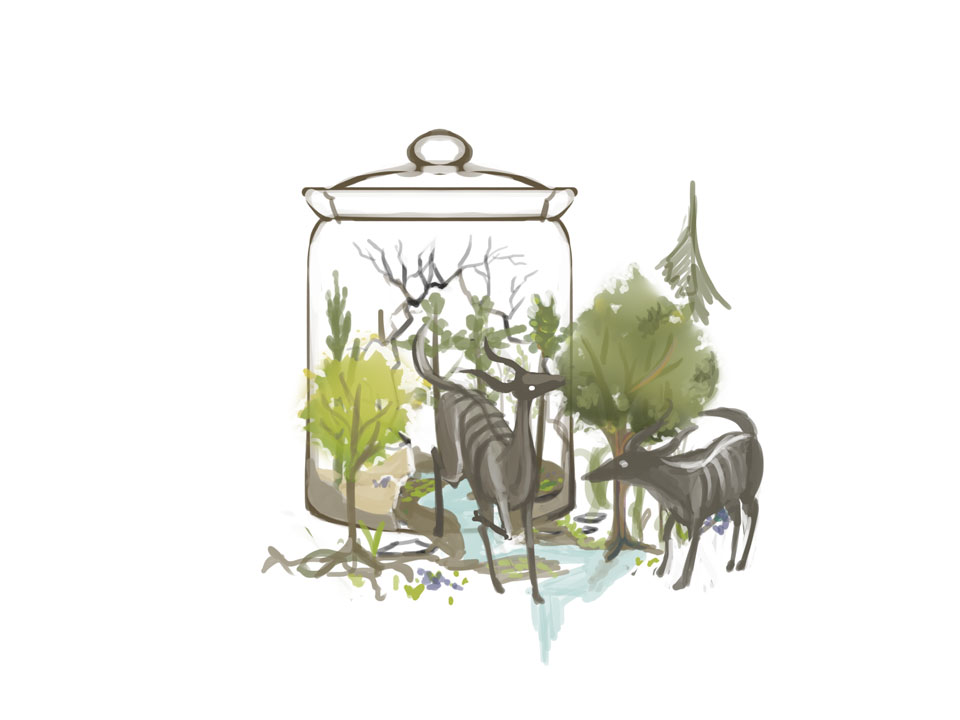
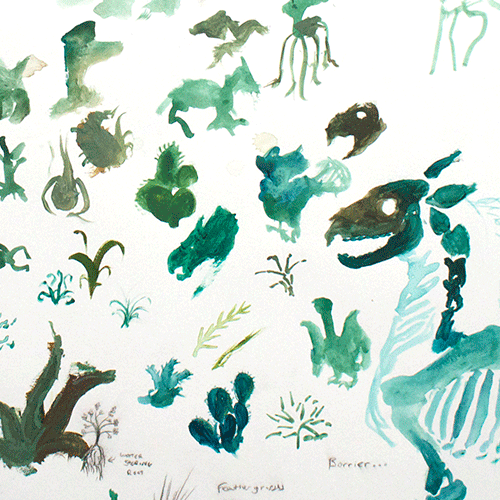
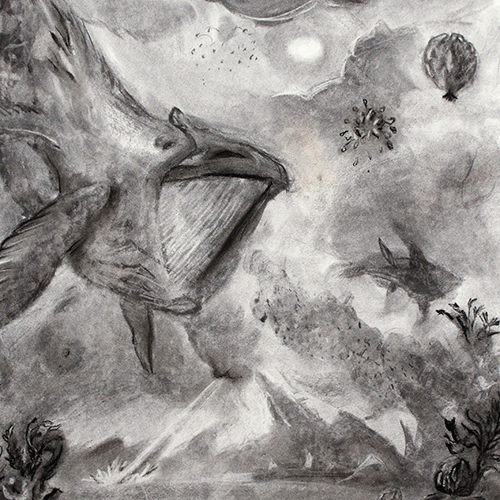
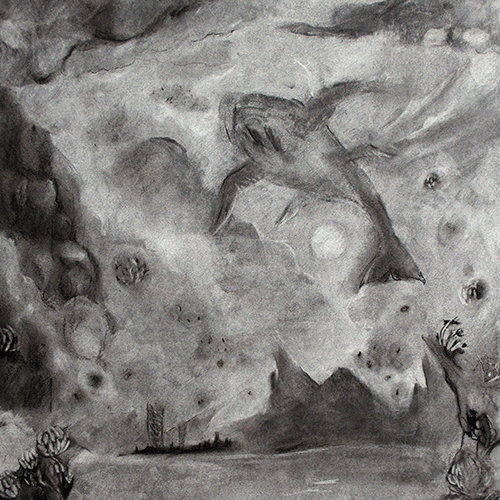
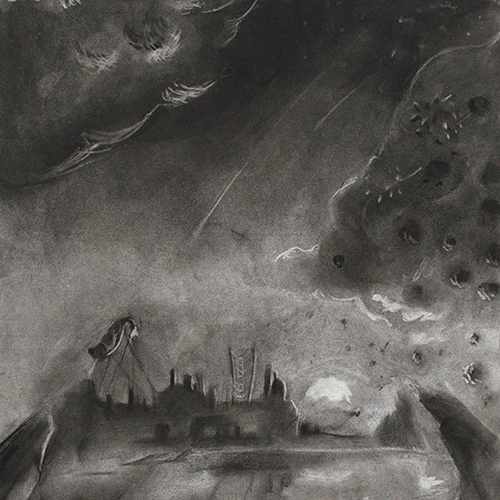
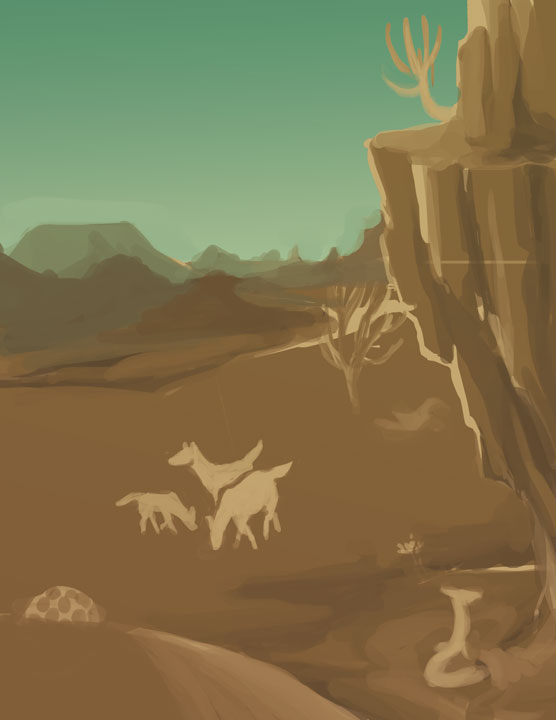
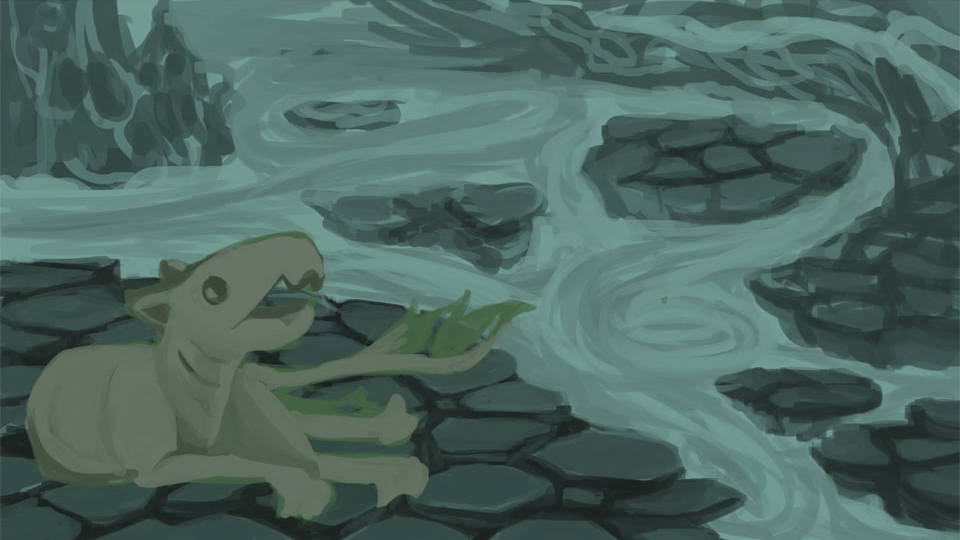
But in time I realized that I was making more progress in digital painting, and it did not make sense to continue struggling on a concept in 3D. I also felt there was a lack of a human element in the original dioramas. So instead I began to brainstorm characters for a series of paintings.

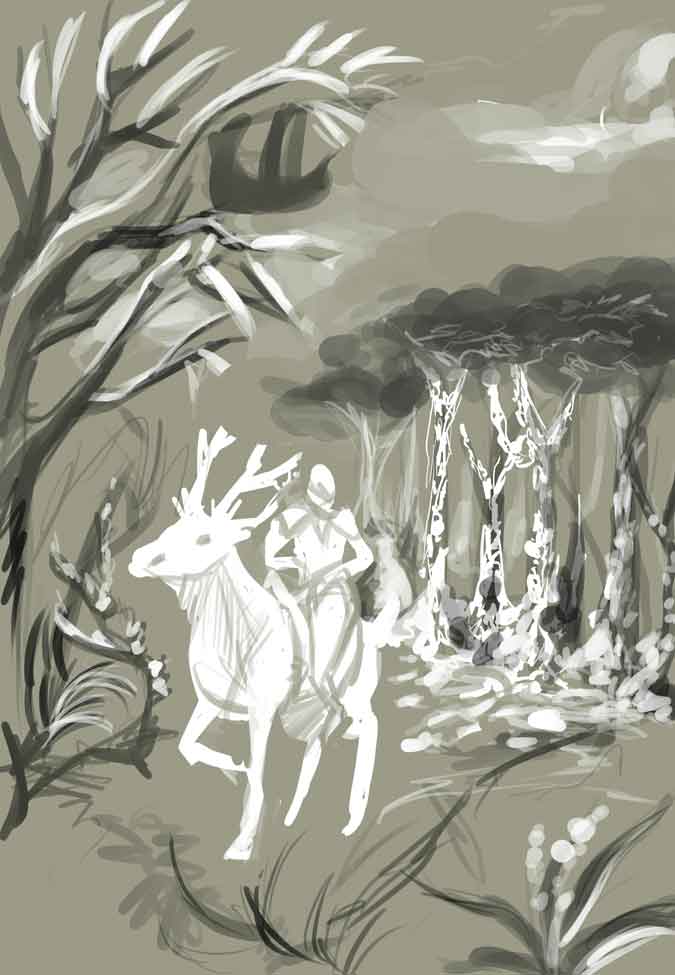
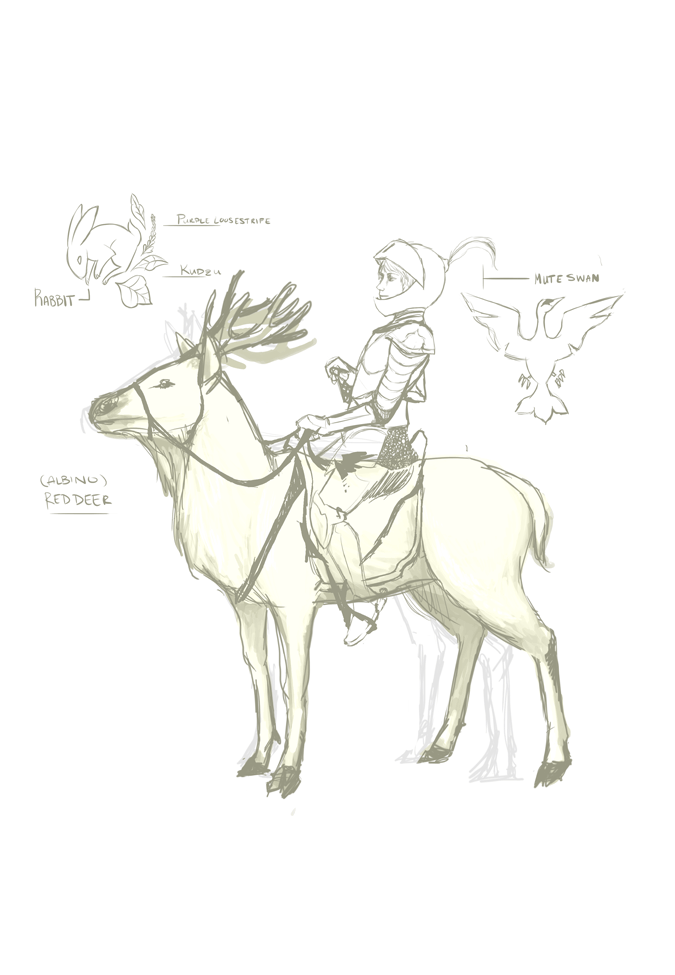
In my course, Conservation of Biological Diversity, I recalled my professor drawing comparisons to the Four Horsemen. From there I started to develop my own connections and representations for each of the horsemen.
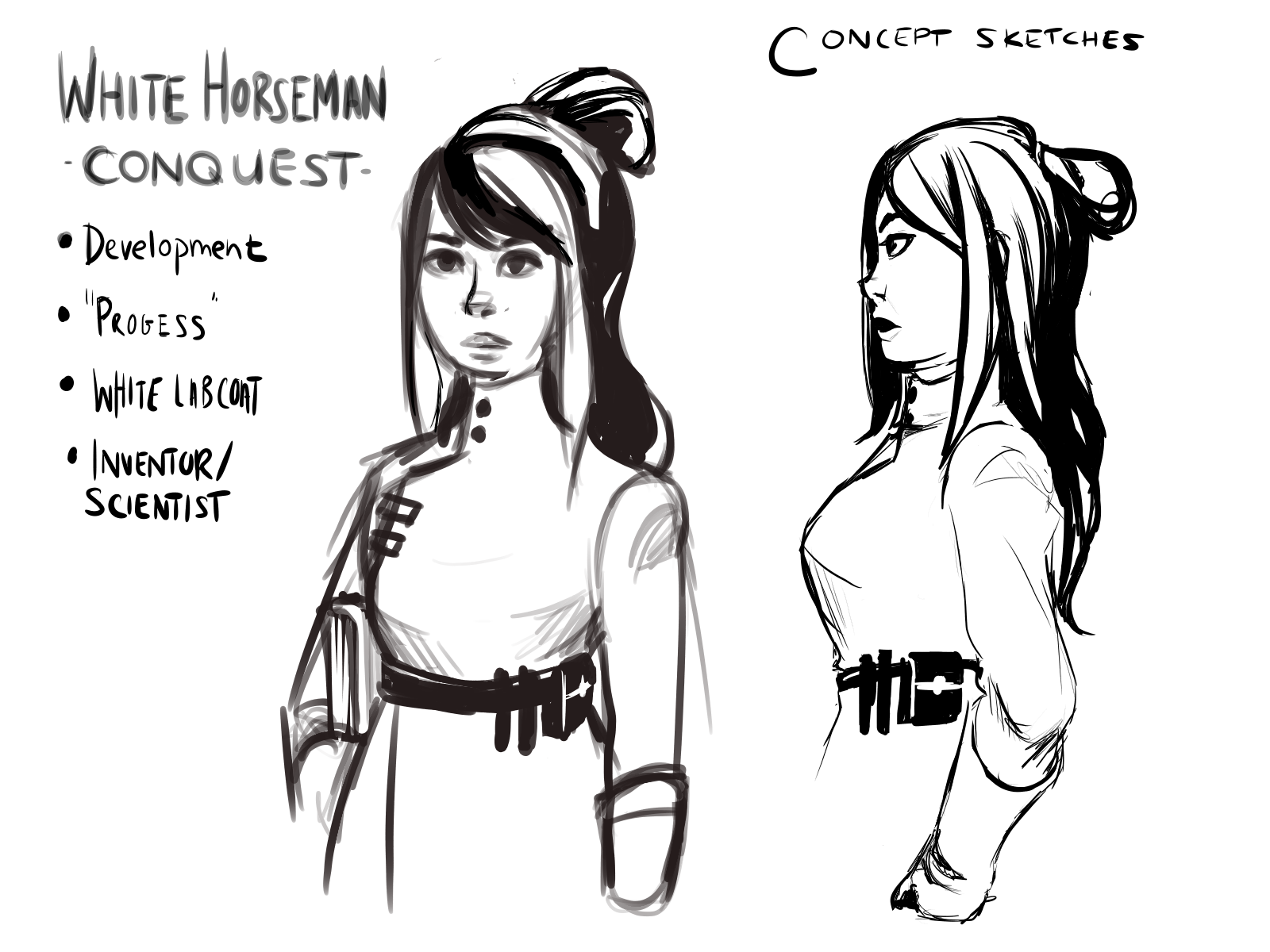
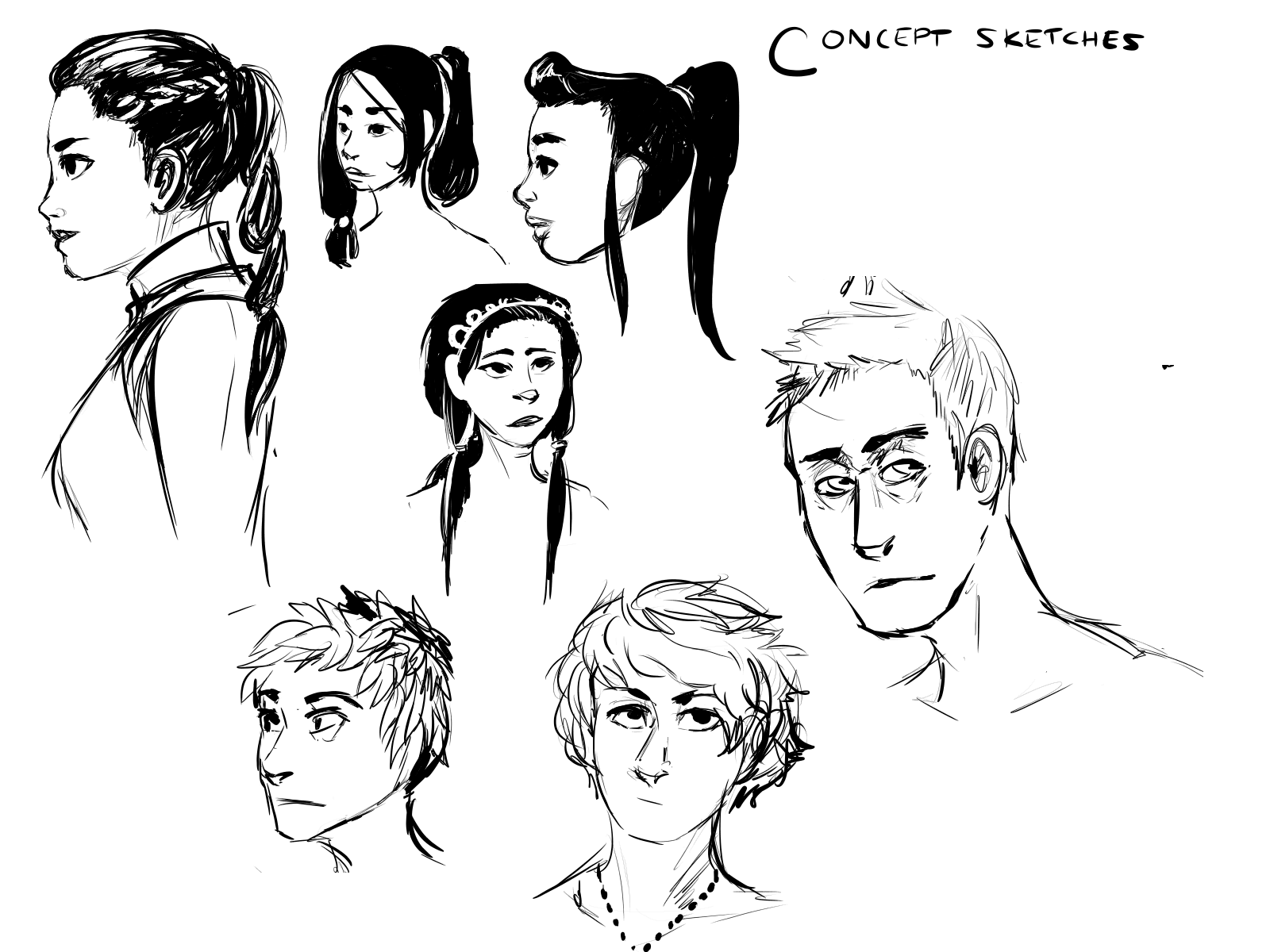
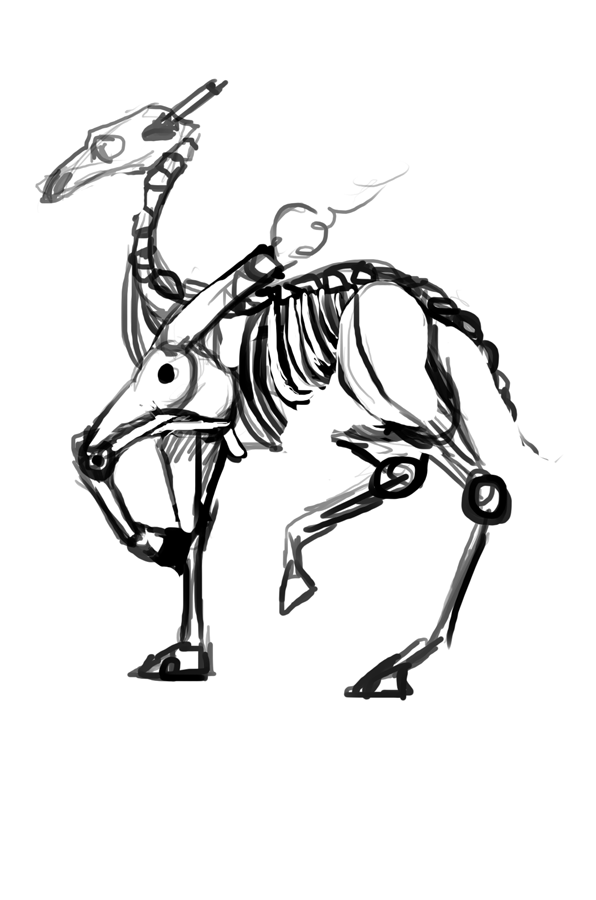
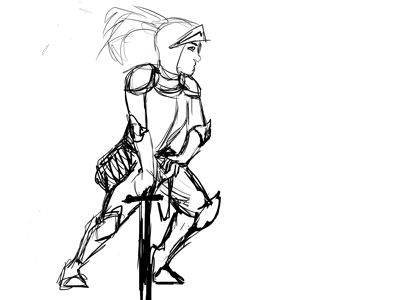
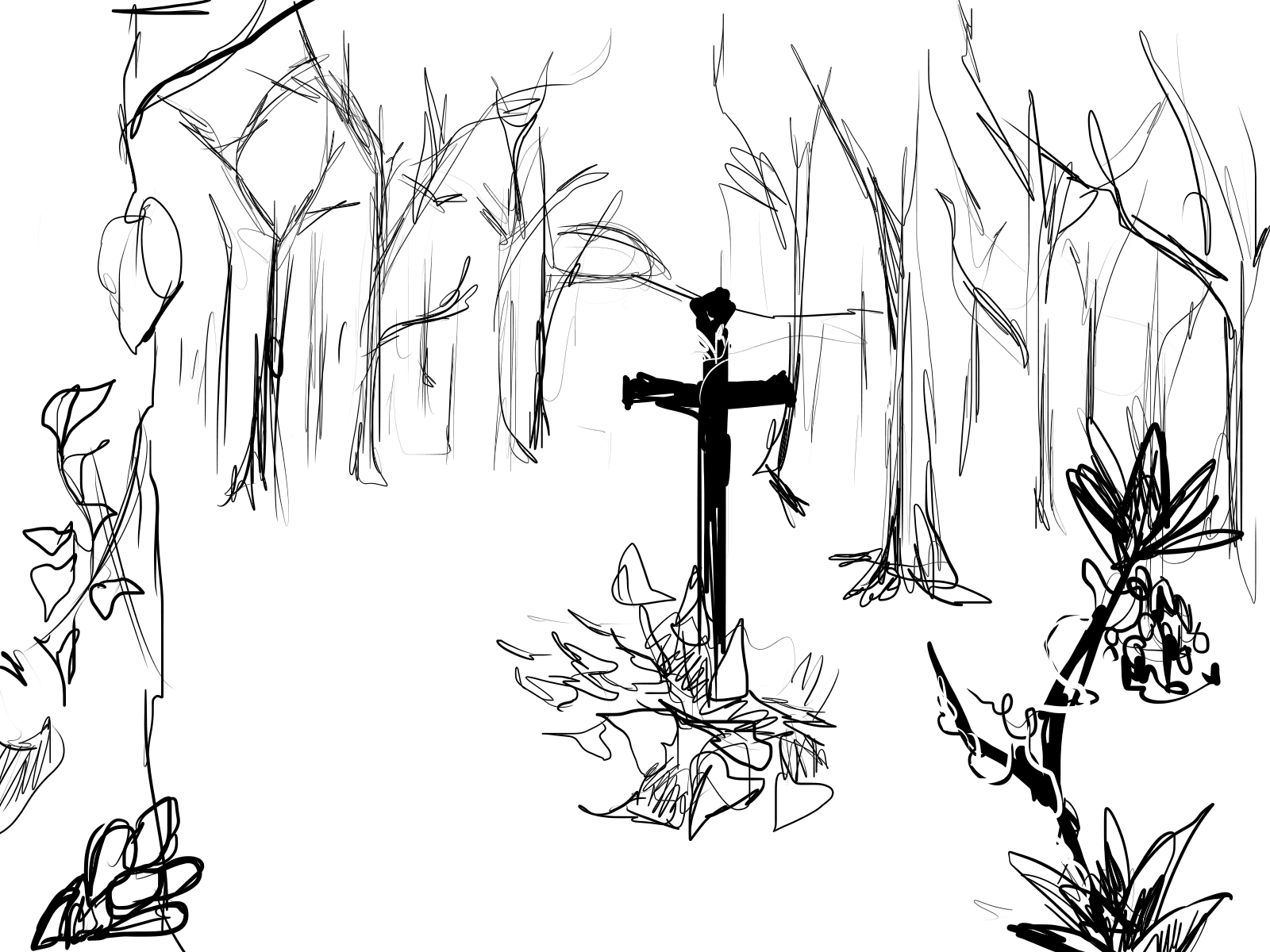
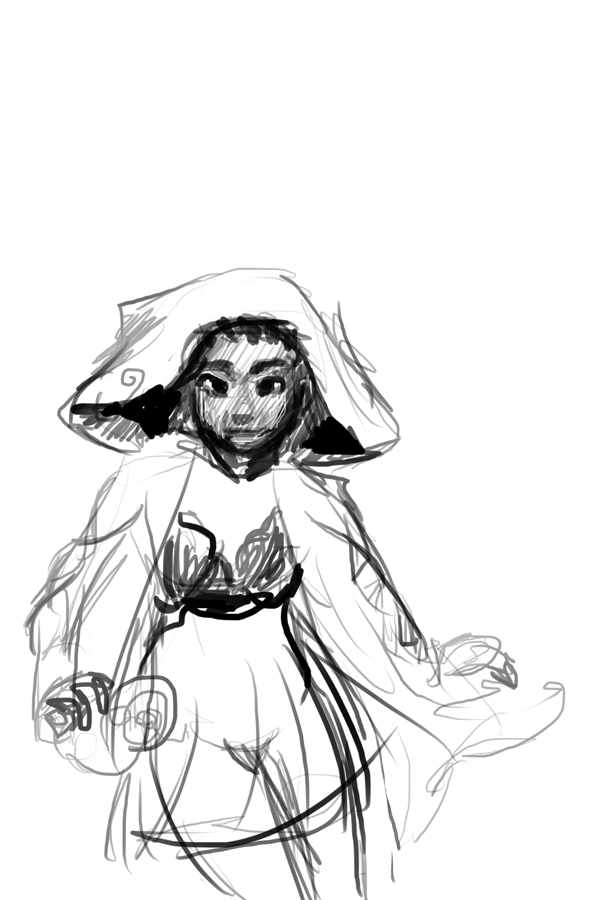
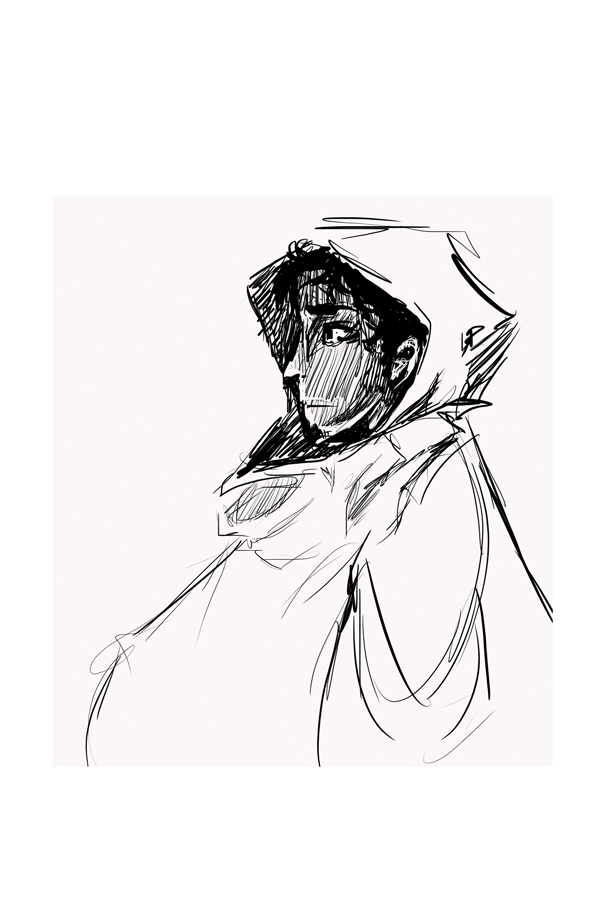
Once I had a solid foundation for each character, I started with small monochromatic thumbnail sketches for the composition:
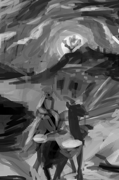
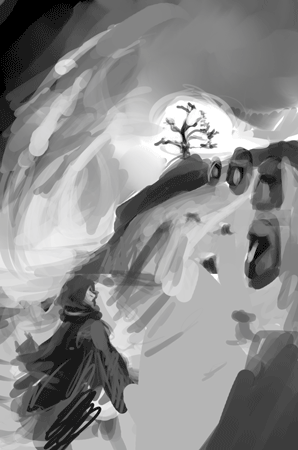

Then I increased the size to about half the size of my final output and start roughing in details. Once I was satisfied with the overall composition I scaled up to full size and start painting in details. Because I originally worked in half size I needed to make sure I covered or smudged all the edges between colors, since scaling created unnatural blurs. After roughing in most of my details I created an overlay layer and experimented with some color. I would then use the resulting colors to finish up the finer details.

Most of the final paintings were completed on a Cintiq. My initial sketches and compositions were all done with a regular Monoprice tablet.








But in time I realized that I was making more progress in digital painting, and it did not make sense to continue struggling on a concept in 3D. I also felt there was a lack of a human element in the original dioramas. So instead I began to brainstorm characters for a series of paintings.



In my course, Conservation of Biological Diversity, I recalled my professor drawing comparisons to the Four Horsemen. From there I started to develop my own connections and representations for each of the horsemen.







Once I had a solid foundation for each character, I started with small monochromatic thumbnail sketches for the composition:



Then I increased the size to about half the size of my final output and start roughing in details. Once I was satisfied with the overall composition I scaled up to full size and start painting in details. Because I originally worked in half size I needed to make sure I covered or smudged all the edges between colors, since scaling created unnatural blurs. After roughing in most of my details I created an overlay layer and experimented with some color. I would then use the resulting colors to finish up the finer details.

Most of the final paintings were completed on a Cintiq. My initial sketches and compositions were all done with a regular Monoprice tablet.













